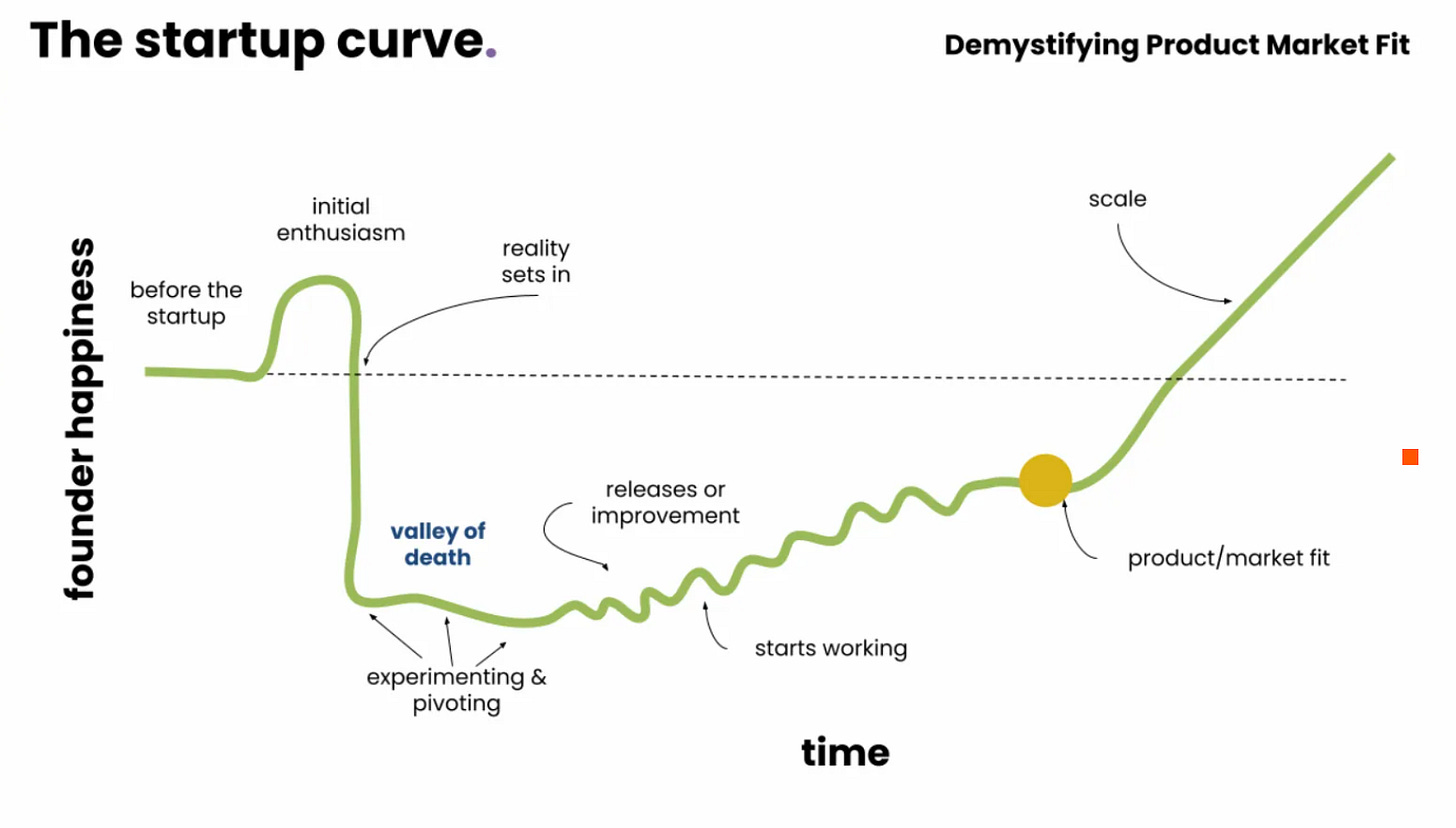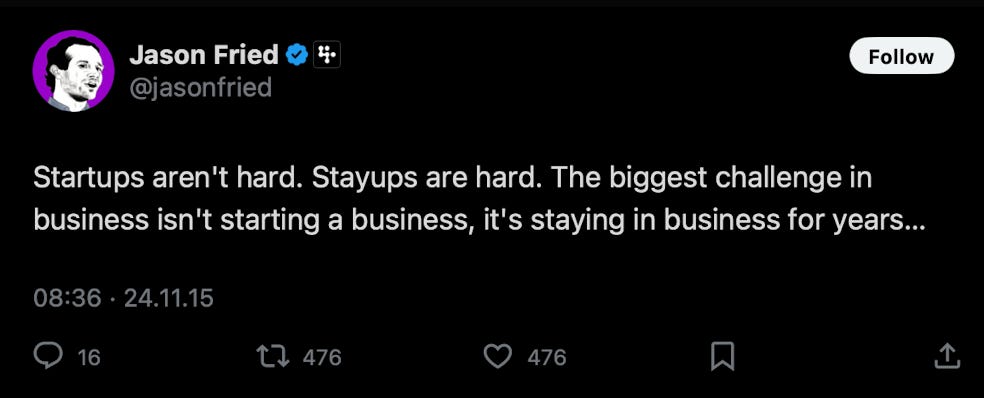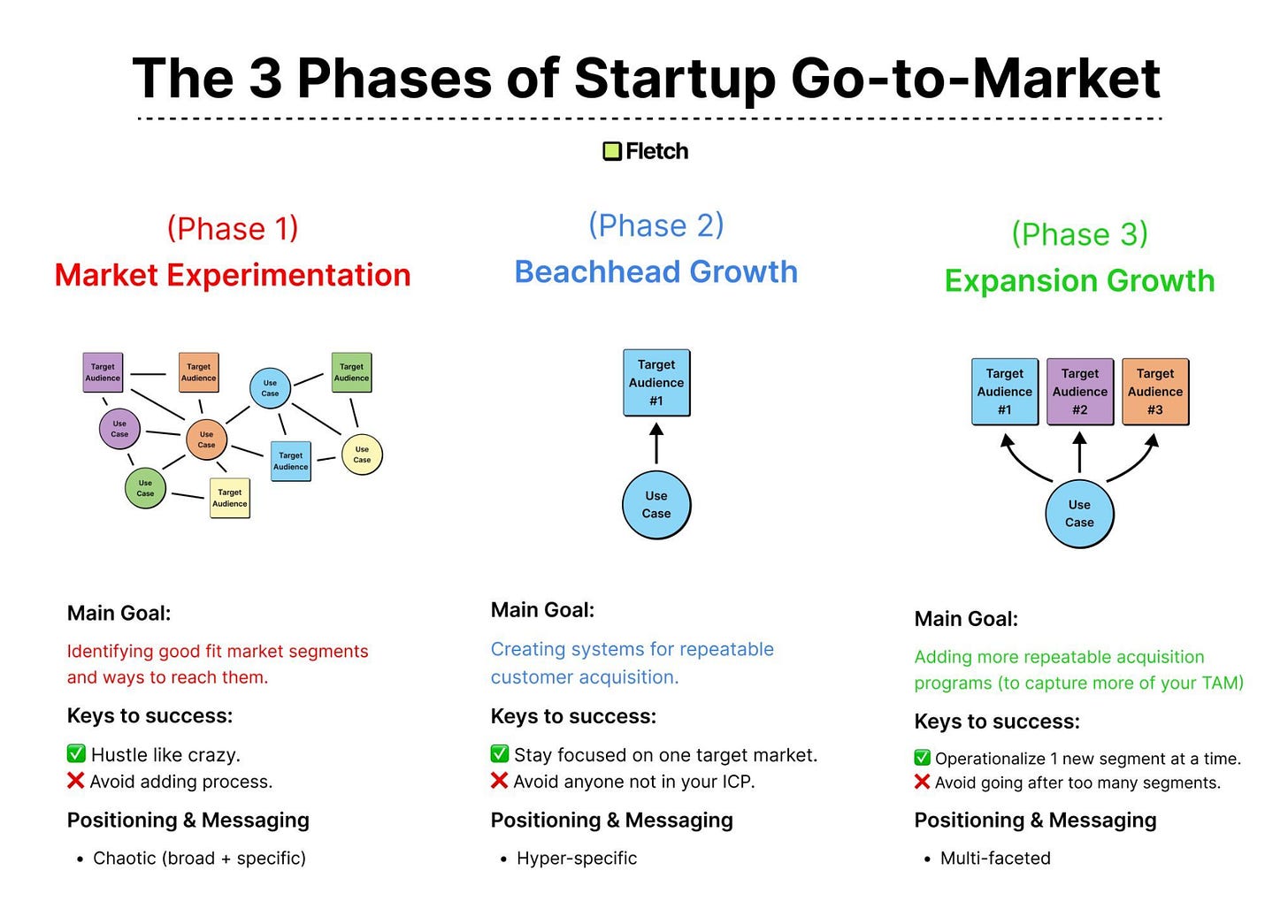Some say the hard part of doing a startup isn’t starting it. It’s staying at it.
Others refer to entrepreneurship as “chewing glass”, making the process sound less appealing than the news we read on Techcrunch, to say the least.
Ben Horowitz famously wrote:
“The hard thing isn’t dreaming big. The hard thing is waking up in the middle of the night in a cold sweat when the dream turns into a nightmare”.
Chances are, if you open up your LinkedIn newsfeed and follow founders and VCs, you will be bombarded with hyper growth success stories that make you feel like you’re behind, questioning if you’re even working on the right thing.
In late 2022, I took the leap and quit my big tech job to pursue the dream of creating something of my own. What followed was a roller coaster of working on multiple ideas, leading to me sharing the key takeaways from building my startup #1.
After ~2.5 years and now running Tackle, I realize that startups continue to be a constant battle fast part the ideation mode. Every phase presents one with new challenges, and it’s crucial to be a stayup to see how the story we had imagined in our heads evolves. In this piece, I’m exploring the next volume of learnings from being a founder— things I wish I’d known when I was starting up.
Think big, start small
We’re often encouraged to think ridiculously big, with many startups claiming to being the end-to-end platform for X. The truth is, the most precious resource we have is time, and there is no way we can accomplish every job-to-be-done in our market category in a short span of 1-2 years. The best way to stay in business is to become exceptional in something small than to stretch yourself thin and do it all, but in a very mediocre way.
Having a big vision helps us stay true to our cause and keep going in the right direction. But taking small steps and nailing one niche use case and building something people really want—now matter how small—is what compounds over time.
I recently had a chat with a repeat Series B+ founder who reminded me of two things:
Things take time. The magic begins when the compound effect kicks in.
Founding is painful. You have to sit through the pain until it you start creating value at scale.
In other words, focus on the most high leverage thing you can do and become really, really good at it. The rest will follow.
Choose your customers wisely
Every sales process should be a double-edged qualification process. It’s hard to keep reminding yourself of that when you’re a no-name startup looking to acquire its first customers and prove its business model.
But the road to Product-Market-Fit (PMF) is a bumpy one, and we have only a handful of tools to operate with to get there as fast as we can. The dream land of PMF looks something like this:
A strong alignment between what you offer and what customers want at efficient customer acquisition and retention rates. Your product can consistently attract and serve a large enough audience to be a viable business.
The keyword in this definition is consistently. To get to PMF, we need to find a consistent way to serve the same type of customer with the same need.
Before closing a customer, qualify their consistency with your story, hypothesis and target market. Ask yourself:
How badly do they need us right now? Measure intensity of pain.
What great outcome can we achieve together? Tie this one to clear KPIs and estimate the ROI.
How similar are they to a customer we already have, or customers we want to have in the future? Keep refining your ICP (Ideal Customer Profile).
Working with customers that don’t fulfill these criteria can severely damage or break your business — they’re likely going to keep you in long sales cycles, ask for feature requests none else needs, and churn away when times get tough. Few things are more disastrous than pouring your time and energy into client success at high CAC (customer acquisition costs) only to see them churn away.
In other words, we need to make sure we switch from Phase 1 of GTM to Phase 2 GTM quickly enough. We can’t simply skip Phase 2 — and we can’t just hire enough people to jump to Phase 3. This means you will have to say no to customers outside of our immediate target IC —and sometimes, it’s the best thing you can do.
Seek clarity, communicate effectively
As a startup, you can’t afford to be misunderstood. Every interaction is a chance to refine your story and align expectations. The road to PMF isn’t only about building the right product for the right customer—it’s also about nailing the right message.
One of the greatest things that can happen to a founder is nailing messaging and positioning in a way that consistently resonates with your target customers. It requires being extremely clear on the problem you’re solving, the value you’re creating, and who you are building it for.
Prospective customers want to see the progress they themselves desire in your case studies, references or market insights. One thing I’ve started to do is revisiting our homepage once a quarter and refining it based on the market insights I have. What I’ve found helpful is recording all my customer meetings and feeding them into ChatGPT or Grok to nail positioning. I’m using this prompt:
We’re a [market category] company. I’m sharing all my customer meeting transcriptions and want to make sure my messaging resonates with my customers, [ICP]. Please answer the following questions:
What are the most frequent words my customers are saying?
What pain point are we solving? How are they describing us?
What is the biggest value we provide?
Too many homepages scream things that can easily make even the most optimistic customers skeptical: “We’ll cut your costs by 50%” or “We’ll skyrocket your margins”. Customers don’t come to us to reduce all their costs or maximize revenue. They have a specific problem in mind, and the clearer we are about what we can realistically solve and deliver, the easier it is to acquire and serve customers in a consistent way.
Make decisions fast
Speed matters in business. I used to hear this statement at Amazon, with Bezos taking it so far that our inbox wouldn’t display emails that are older than 30 days. “If it wasn’t done in 30 days, it doesn’t matter” was a simple justification for this policy.
I used to fixate on getting every decision great. But to discover what’s truly right, we need to simply act and learn quickly. Unless it’s an irreversible choice, a fast decision often beats a perfect one that takes 3x longer to make.

Time is the ultimate resource we are constantly running out of. The faster we make decisions past the “valley of death”, the more chances we give ourselves to seek truth that will eventually lead us to PMF. The key is not making a perfect decision, it’s making decisions quickly enough and correcting the course as needed.
Note to my future self: Whatever it is you’re facing, make a quick decision now and move on. Measure the outcome and note what you’ve learned.
Be radical and say no
I’ve mentioned saying no to prospective customers who don’t fit target audience #1, but this point goes beyond that — whether it’s onboarding new team members or building new features —unless it’s a hell yes, it should be no by default. Learning to say no is still difficult for me, but acquiring this skill has helped me gain clarity and focus when things get overwhelming (and in startups, they always do).
Early in my career, a mentor once told me: “Successful people are often successful not because of the many things they’ve achieved, but the many things they turned down to be good in one particular field”.
Sometimes, clarity beats hard work. Focus on the former. Less is more.
You’re not your startup
Last but not least—you’re not your startup. When we create something from scratch, we’re presenting a part of ourselves for others to judge and assess. Especially if we put our name under it and leave our stable jobs for this, the stakes are higher.
It’s incredibly hard not to take failures personally. But as the saying goes: the only person not failing is the one asleep. Or as Thomas Edison put it,
I have not failed. I've just found 10,000 ways that won't work.
One product launch or sales cycle doesn’t define our entire story. For your own mental health, learn to separate your own identity and self-worth from the trajectory of your company.
TL;DR
Here they are, my learnings from not only starting up, but staying up on this wild journey of building a company. I feel like I should go ahead and put these on a post it:
Think big, act small
Choose customers wisely
Seek clarity, communicate effectively
Make decisions quickly
Be radical and say no
You’re not your startup
Here for any thoughts you may have! Thank you for making it this far.
And as always, keep going :)





